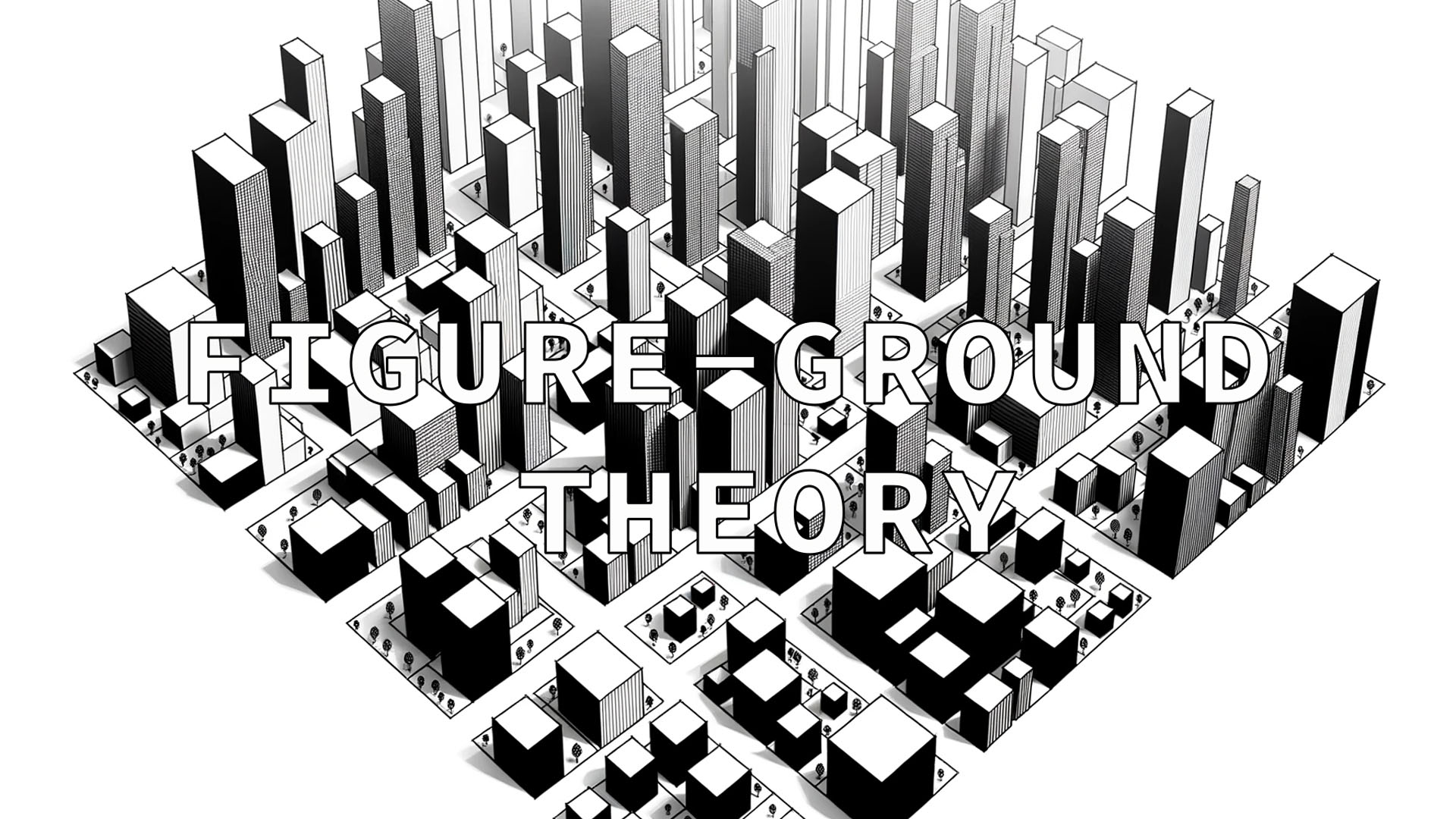UNDERSTANDING THE FUGURE-GROUND THEORY IN ARCHITECTURE
The interplay between buildings, structures, and the surrounding open spaces goes beyond mere aesthetics. It's deeply rooted in a foundational concept known as the "figure-ground theory." This principle, derived from the realm of design and architecture, offers insights into how spaces are perceived and interacted with.
WHAT IS THE FUGURE-GROUND THEORY?
At its core, the figure-ground theory is a perceptual principle derived from Gestalt theory**. It refers to our ability to visually differentiate between an object (the "figure") and its surrounding space (the "ground"). In a simple visual composition, you might recognize this as distinguishing between a subject and its background.
** [The Gestalt theory of perception proposes that people make sense of the world by taking separate and distinct elements and combining them into a unified whole.]
HOW DOES IT APPLY TO ARCHITECTRE?
In the realm of architecture and urban design, the figure-ground theory plays a crucial role in understanding the relationship between built forms (buildings, structures) and the voids or open spaces (streets, plazas, gardens) around them. A figure-ground diagram, often used in urban planning, is a two-dimensional map where buildings (figures) are typically represented in solid black and the open spaces (ground) in white. This stark contrast allows designers to comprehend the spatial patterns of urban areas, revealing the density, connectivity, and continuity of spaces.
WHY IS IT IMPORTANT?
- Spatial Clarity: The figure-ground theory helps in achieving clarity in spatial layouts. By understanding how buildings and spaces relate to each other, architects can create more legible and navigable environments.
- Urban Connectivity: In urban design, the theory aids in understanding the flow of spaces. Continuous white areas in a figure-ground diagram indicate better connectivity and walkability in urban settings.
- Aesthetic Balance: A balanced figure-ground relationship can lead to aesthetically pleasing designs. It ensures that neither the built forms nor the open spaces dominate the environment, leading to harmonious spatial compositions.
- Functional Efficiency: By analyzing figure-ground relationships, architects can optimize the functionality of spaces, ensuring efficient circulation.
A CONTEMPMORYRY TAKE ON FIGURE-GROUND
While traditional figure-ground diagrams are black and white, modern interpretations might use gradients or colors to represent different building heights or functions, giving a more layered understanding of urban fabric. Such diagrams can reveal how skyscrapers might overshadow public plazas or how an urban park can serve as a respite in a densely built area.
IN CONCLUSION
The figure-ground theory is more than just architectural jargon. It's a lens through which we can better understand the spaces around us, from the layout of our favorite city to the design of a local park. When certain elements or spaces are not directly visible but still perceptible - they are present even if they aren't distinctly seen - they are referred to as "implied." By appreciating the balance and relationship between built forms and open spaces, we can gain a deeper appreciation for the environments we inhabit daily. As you design and conceptualize spaces, always consider the figure-ground relationship and how it can elevate your architectural narrative.
